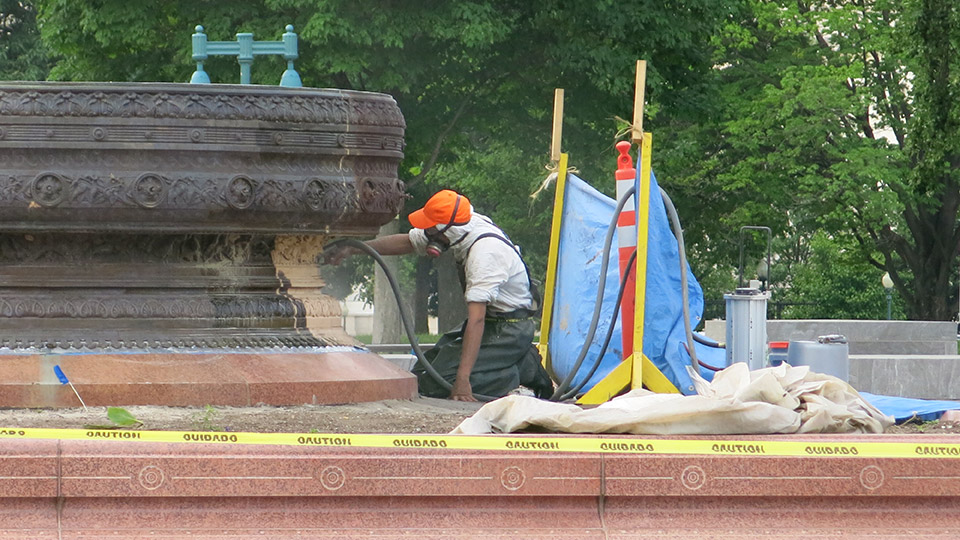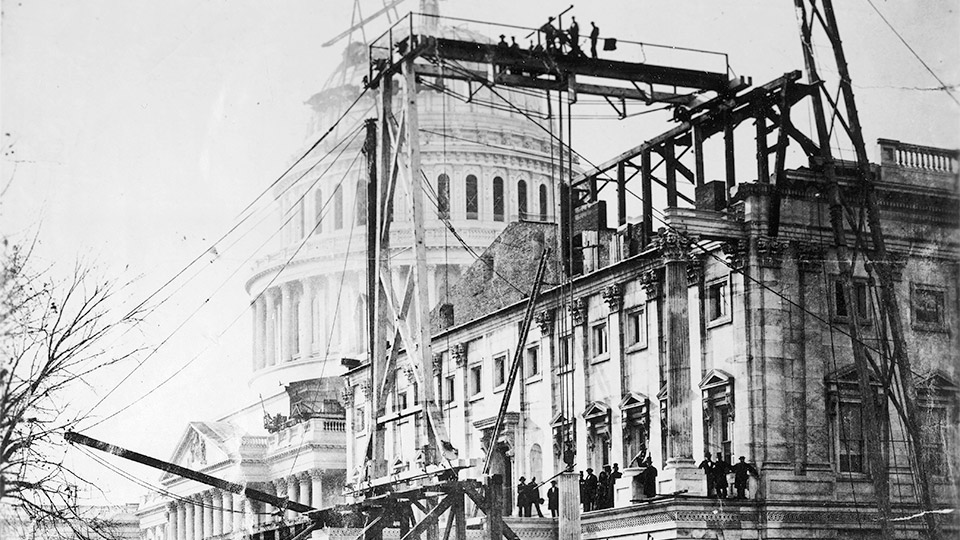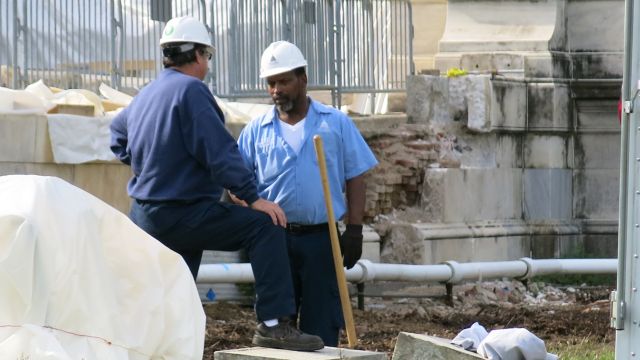Restoring the Capitol Building
Federal construction
In May, I had the rare opportunity to tour the exterior of the U.S. Capitol building with Mary Oehrlein, FAIA, LEED AP, historic preservation officer, Architect of the Capitol in Washington, D.C., to view several different restoration projects currently underway. The tour provided as much a history lesson as an update (see vintage images).
What I learned is that the upkeep of our nation’s capital is ongoing and – as you’ll learn – evolving in the way of methods and even record keeping. I sat down with Oehrlein for details on the improvements and repairs underway to the exterior of the Capitol building. Following is what she had to say.

Mary Oehrlein: I am the historic preservation officer for the Architect of the Capitol, and along with the AOC curator, I am responsible for assuring the long-term protection and preservation of our Heritage Assets. The AOC Heritage Assets include buildings, memorials, monuments, fountains, historic landscapes, landscape structures, sculpture, works of fine art and decorative art, living plant specimens, archeological sites, stored art and architectural materials, historical records and photographic archives.
Prior to joining AOC, I was principal of my own preservation architecture and planning firm for 28 years. My particular area of interest/expertise is masonry and metals conservation, and I have worked on masonry preservation projects across the country. I had the good fortune to be a consultant to the AOC on multiple projects starting in the 1980s and to work with the current and three prior architects of the Capitol.

Oehrlein: Current work at the exterior of the U.S. Capitol and Capitol Square include:
- The cast iron dome, designed by Thomas U. Walter and completed in 1865, is being restored. The work includes removal of all paint, repair of cracks in the cast iron, replacement of missing decorative elements, updating of the bird deterrent systems, repair of the wood windows and repainting with high-performance paint systems.
- Portions of the 1875-1890 Olmsted Terrace stone walls at the Senate approach sidewalk are being dismantled and reconstructed, the stone cleaned and all joints pointed with mortar to match the original.
- The bronze fountains and light fixtures on the East Plaza, also designed by Frederick L. Olmsted, were recently cleaned and coated to restore the original brown statuary finish.
- And, beginning soon, is the Exterior Stone and Metal Preservation project. This work will clean, point, make Dutchman and mortar repairs, consolidate and replace severely deteriorated/missing stone. The work also includes conservation of the stone pediment sculpture and the bronze, cast iron and wrought iron light fixtures and railings. This is a project for which I prepared construction documents prior to joining AOC, so I am thrilled to see it come to fruition.
Oehrlein: Stone that is still being quarried is purchased through normal channels of suppliers and fabricators. Stone that is no longer actively quarried comes from a variety of sources, such as contractor stockpiles, demolished building stone that is now recycled by numerous suppliers across the country, and from our own material stockpiles stored in a variety of locations in the Washington area.

Oehrlein: We use the least invasive, gentlest materials and methods possible to clean stone. Loss of material or damage caused by maintenance is not acceptable. We have used steam, low pressure (500 to 800 psi) warm water, alone and in combination with detergents and other cleaning agents, low-pressure micro-abrasion (45 to 90 psi Ibex System) and laser cleaning on recent projects.
Repair and replacement work is done by skilled stone masons. We have excellent in-house stone masons; outside contractor qualifications and experience are carefully evaluated. Level of care taken in cleaning and repair of stone is not dependent upon location. All historic stone is treated as valuable, irreplaceable material that is to be retained and preserved for as long as possible. More recent stone, like bathroom stall partitions, is often replaced with new, but the removed stone is saved for repairs in other locations.
Masonry: How well have past architects and contractors done in keeping records of their work to the Capitol building? What are you plans for record keeping and tracking projects going forward?
Oehrlein: Our records of past work are quite exceptional. We have more than 200,000 drawings dating from the earliest competition drawings for the design of the Capitol through projects completed this year. The drawings produced in the 19th century are beautiful works of art, unlike today’s computer generated drawings. We also have text records for the same period of time, which include correspondence, contractor proposals and invoices. Our project records continue to be archived and our Photography Branch actively creates photo documentation of all construction projects. We are, like all archival facilities, developing a system for long-term archiving of our digital records.

Oehrlein: Projects planned to begin soon include restoration of the Grant Memorial, the next phase of exterior stone restoration at the Supreme Court and the first phase of exterior stone restoration at the Russell Senate Office Building.
Masonry: Any comments on the use of masonry (stone, marble, any brick or block work) and its green characteristics or longevity?
Oehrlein: This is an interesting question, because while masonry, and stone in particular, is certainly not a renewable resource, it has a service life of many centuries, assuming it is detailed and maintained properly. And, unlike other recyclable construction materials, it can be reused indefinitely with minimal reprocessing. Seems pretty green to me.
About the Author
Jennifer Morrell was the editor of Masonry magazine. She has 20 years of experience in the publishing industry as a writer and editor, covering such topics as real estate and construction, insurance, health care, relationships and sports. A graduate of The University of Georgia’s Grady College of Journalism, she earned a Bachelor of Arts degree in magazines and is an award-winning newspaper columnist.



















